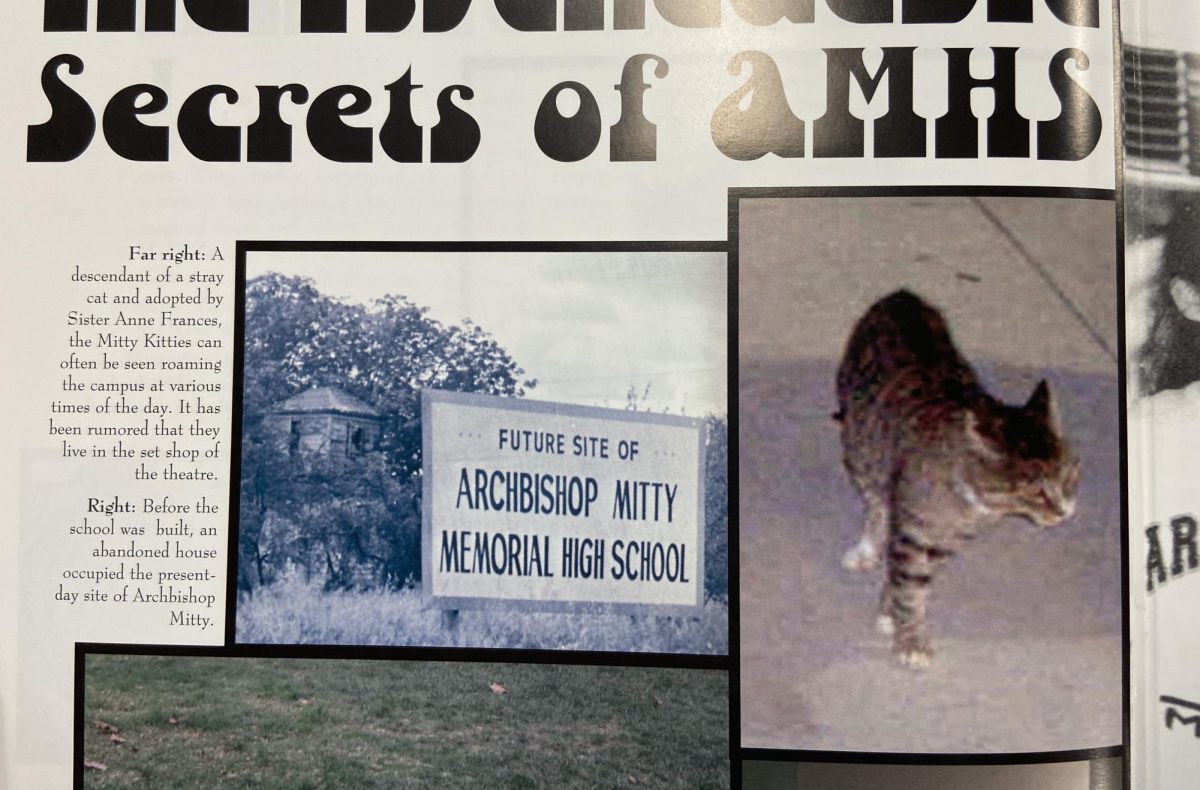Picture this: you’re walking out of your physics final, your brain fried and your stomach sinking. That gut-wrenching feeling of “maybe I bombed it” starts to creep in, and all you want is something—anything—to take the edge off. Maybe a furry friend to pet—that’ll calm your nerves. Now, imagine if that furry friend was just a few paw-steps away. For students in the ’90s, they didn’t need to imagine—there were actually two campus cats normally around, ready to offer you the purr-fect relief!
Mitty was quite different 30 years ago—home to just 1,300 students, compared to the 1700+ who fill campus today. Back then, students even had a designated area where they could relax and smoke, offering a brief escape from the daily hustle and bustle of school life. But there also existed healthier alternatives to where students could alleviate their stress. This alternative lived in the main office next to the school library.
As far as principal Ms. Caputo can remember, “Mitty Kitty,” or rather, “Mitty Kitty One,” was always there—”a fixture of the school.” She was a stray black and white cat, whom, back then, Sister Ann Francis brought over and regularly took care of. Mitty Kitty became a symbol of comfort for students. In a time when mental health wasn’t discussed as much as today, the simple presence of a pet in an academic setting offered students an unexpected, yet appreciated distraction. Ms. Caputo elaborated that “she provided a really positive environment. She gave students a reason to come into the main office without having to turn in a form or talk to someone—you could just swing by, give the cat a few pets, and go. She brought people together.” The Mitty Kitty not only helped break the ice in an otherwise intimidating atmosphere, but also allowed for students to unwind during moments of stress, especially during exams or after long, exhausting classes.

But there wasn’t just one Mitty Kitty; another furry resident lived in the boiler room of the campus. “Mitty Kitty Two” was a calico cat who accompanied Mr. Costanza in his daily tasks. These two cats wandered the halls of Mitty, stealing the attention of whoever they strolled past, leaving small paw prints with major impacts. As Mitty grew, so did its reputation for being a space of comfort and acceptance, and the Mitty Kitties certainly played a central role in this novelty. They weren’t just pets; they were companions—silent, but ever-present, easing the minds of many. Present in even old yearbook photos, the Mitty Kitties allowed students to find solace in a busy school life.
During these times, it wasn’t just the students who enjoyed the cats’ company; teachers and staff were also drawn to the uniqueness and comforting presence of the Mitty Kitties. For example, art teacher Ms. Lemak first met Mitty Kitty One during her job interview in the office, and like anyone else, was bewildered by the normalness of everything. She recalls thinking, “A cat can exist at a high school without being bothered? Mitty must be a special place.” To this day, Ms. Lemak credits her successful job interview to the cat, who offered her invaluable solace on that fateful afternoon. It’s in moments like these—unexpected and unassuming—that the true impact of the Mitty Kitties revealed itself.
In the end, the cats weren’t just beloved companions, they were a subtle symbol of care, community, and compassion. As Ms. Caputo puts it, “Sister Ann Francis saw an opportunity by caring for Mitty Kitty One. It was a way to bring a little extra love and joy to the students. By caring for that cat, she provided another source of joy in their lives.”
The cats serve as a warm reminder that even small gestures of kindness can leave a lasting impression. Though the cats may be gone, the memory of them lives on in the hearts of those who knew them, and in the legacy of joy and quiet faith that Sister Ann Francis left behind.


